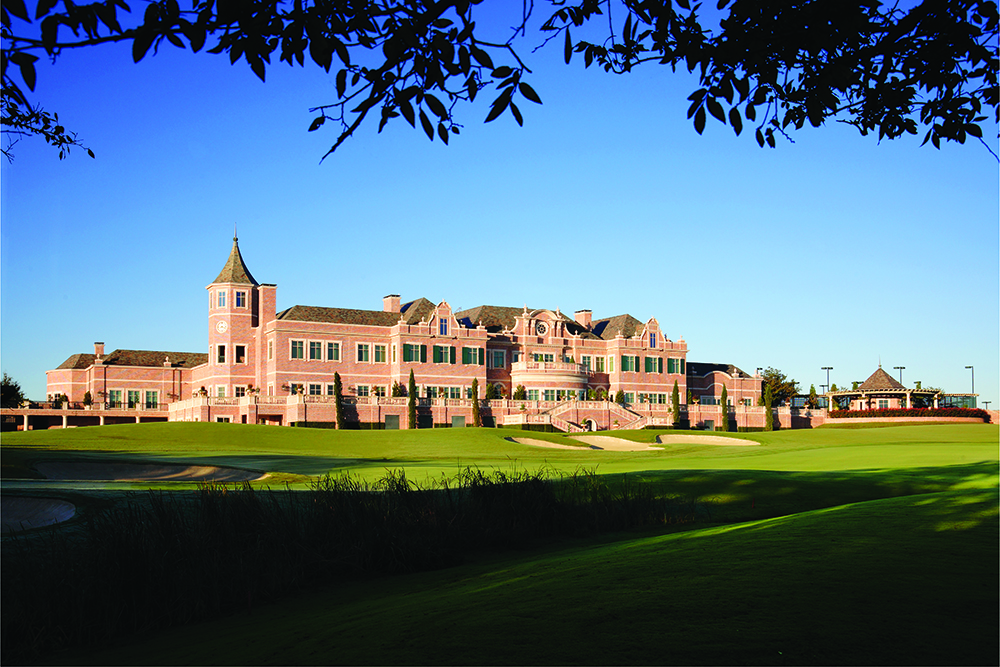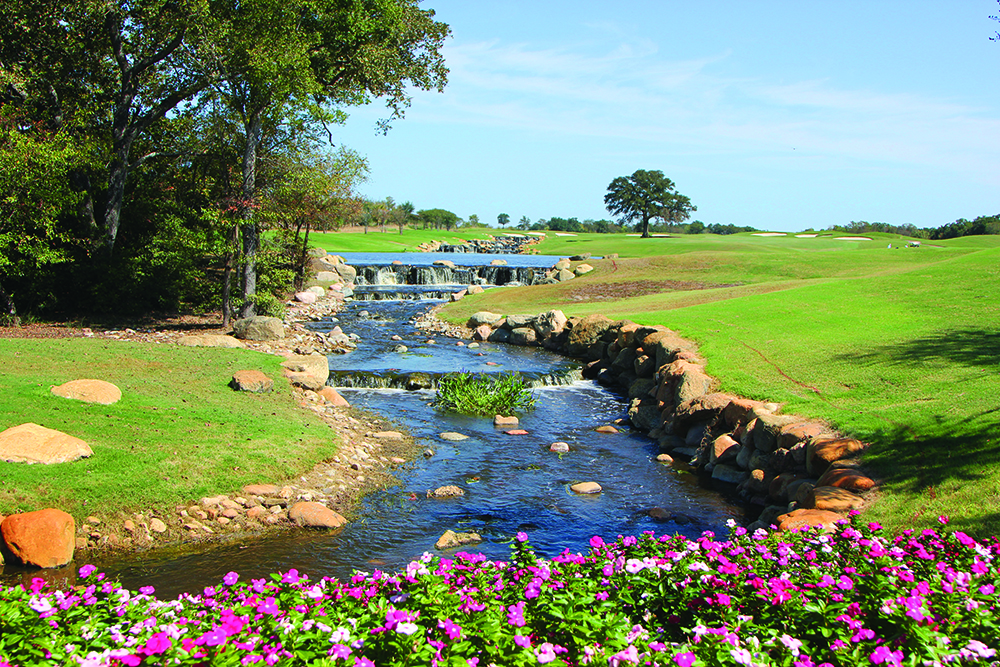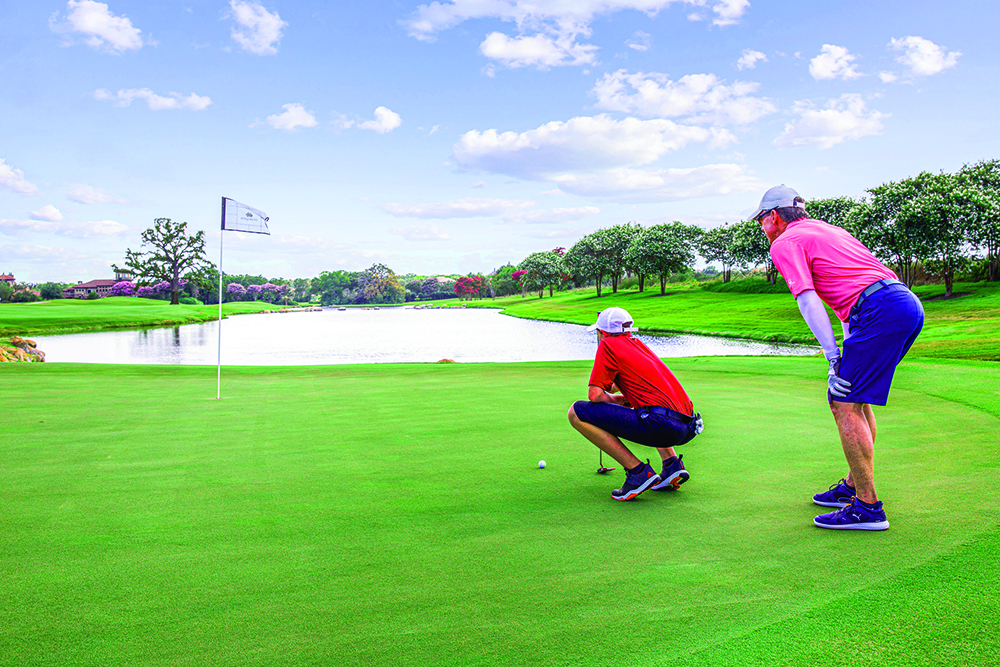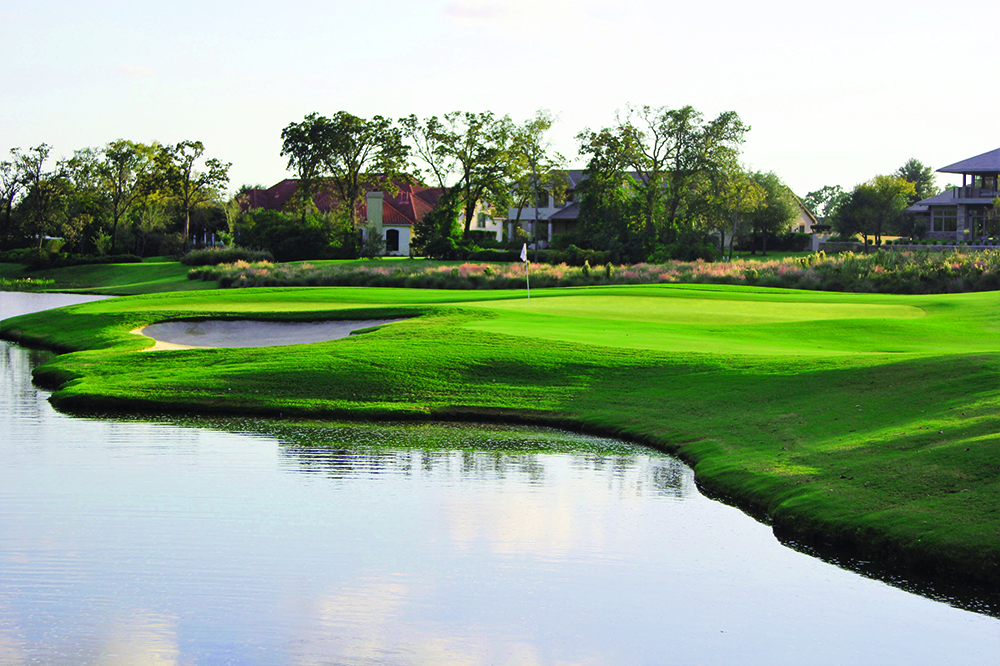 At Miramont Country Club, on the other side of the clubhouse, there’s a golf course. It has intriguing holes, outstanding conditions, and a high fun factor. It’s a course, however, that could have been overshadowed by the Miramont’s clubhouse. Most golf courses would be. After all, the clubhouse we’re talking about is 93,000 square feet. Few in the world are that grand, so any discussion of Miramont always seems to gravitate toward it.
At Miramont Country Club, on the other side of the clubhouse, there’s a golf course. It has intriguing holes, outstanding conditions, and a high fun factor. It’s a course, however, that could have been overshadowed by the Miramont’s clubhouse. Most golf courses would be. After all, the clubhouse we’re talking about is 93,000 square feet. Few in the world are that grand, so any discussion of Miramont always seems to gravitate toward it.
But Miramont, which means “view from the grassy hill” in Italian, is much more than its clubhouse. And though this European-styled, castle-like structure is probably the first thing most think about when the topic of Miramont comes up, it’s almost a contradiction at this exclusive club. You see, Miramont really isn’t that stuffy. It’s the opposite of that. Despite the fancy digs — owner and founder Don Adam, a billionaire businessman, philanthropist and one of Texas A&M University’s most distinguished alumni (Class of 1957) — simply wanted to build a place for his friends to gather and play golf. And that is basically what happened 17 years ago, albeit on a monumental scale, when Miramont opened.
“We’ve got our building, which is very formal. It reflects our owner’s tastes,” said Rob Yee, Miramont’s director of golf who was hired seven years ago after 10 years at the Vaquero Club in Westlake near Ft. Worth. “But we’ve got a membership full of Aggies, and there’s just that Bryan-College station attitude as a whole. They just embrace a different pace of life.”
 A haven for Aggies (and the other members, too)
A haven for Aggies (and the other members, too)
How incredible is Miramont’s clubhouse? Well, it was named the sixth best in the country and best in Texas by Club + Resort Business Magazine in 2021. The rankings reflected the judges’ scoring of clubhouse square footage, locker rooms, event space, seating capacity and several other amenities in which Miramont excels.
For the record, Miramont’s clubhouse includes a ballroom that approaches 5,000 square feet, a mixed grill that’s nearly 2.200 square feet, and a beautifully stocked golf shop that’s almost 3,000 square feet. The locker rooms — men’s and women’s — are among the finest in the state, and there’s a large fitness facility, tennis shop, 19th hole, terraces and many other rooms.
The design also includes 32,000 square feet of Jerusalem gold and chocolate marble. The walls are sprinkled with marble dust, and there are 24K leafing in the archways that were hand-painted by French-Canadian artists. And during the construction phase, more than 5,000 trees, 19 different varieties, were imported from Adam’s tree farm in Florida. It encompassed more than 500 truckloads.
 Another standout aspect is the collection of 15 luxury guest suites in the clubhouse, available for the nearly 400 members to rent for themselves and their guests. They are booked months in advance on weekends during the Aggies’ football season, as you might expect, as well as other special events like graduation.
Another standout aspect is the collection of 15 luxury guest suites in the clubhouse, available for the nearly 400 members to rent for themselves and their guests. They are booked months in advance on weekends during the Aggies’ football season, as you might expect, as well as other special events like graduation.
“One member comes in from Canada and brings a group of eight. We see him once a year, one weekend, until the next year,” Yee said.
A golf course worthy of Miramont
The clubhouse is an incredible first impression and last impression, waiting for golfers as they come off the ninth or 18th holes.
The golf course has much to live up to; it doesn’t disappoint.
 Adam tabbed Robert Trent Jones Jr., to design the golf course, a championship layout that plays 7,127 yards from the back tees. There are double fairways, lots of water and several risk-reward opportunities.
Adam tabbed Robert Trent Jones Jr., to design the golf course, a championship layout that plays 7,127 yards from the back tees. There are double fairways, lots of water and several risk-reward opportunities.
Jones’ layout is very player friendly, with four sets of tees, staring at 5,141 yards. But while it’s very payable, it certainly has a championship pedigree. In 2014 and 2015, it was the host course for the national Junior PGA Championships. The winner in 2014 was a teenager from Shreveport, La., named Sam Burns. The junior title earned him a spot in the 2015 Valero Texas Open.
“I get into a PGA Tour event,” Burns declared at the time. “That’s been a dream of mine for a while, so it’s pretty special.”
Burns is now one of the best players in the world, having won four times on the PGA Tour.
The course, which was routed through woodlands, lakes, creeks, ravines, and gentle elevation changes, also has been the site of numerous Southern Texas PGA events as well as the Texas Amateur in 2009.
The design gives players lots of options on how to play the holes. The par-5 ninth hole, for example, allows golfers to choose between threading their second shots through a narrow, wooded neck directly at the green, or playing safely out to an open area to the right. The 16th also has a double fairway with the wider right side around a grove of trees representing a longer, but safer path.
 There are also two drivable par 4s — the 11th and 17th — if you play the proper tees, and they certainly have a good element of risk. The 11th is a dogleg left and just 268 yards to the green from the white tees, but it’s all carry over water. The 17th has a lake and creek that crosses in front of the green, but again, from the white tees, it’s 255 yards to a green that’s also fronted by four bunkers with another bunker behind the green.
There are also two drivable par 4s — the 11th and 17th — if you play the proper tees, and they certainly have a good element of risk. The 11th is a dogleg left and just 268 yards to the green from the white tees, but it’s all carry over water. The 17th has a lake and creek that crosses in front of the green, but again, from the white tees, it’s 255 yards to a green that’s also fronted by four bunkers with another bunker behind the green.
The par-3 holes stand out as well. No. 12, for example, plays over a lake and with multiple tee boxes around the water, can be a completely different hole, depending on where the teeing ground is, ranging from as short as 120 yards to 230 yards.
Yee said his favorite hole is the par-4 eighth. This dogleg left is 419 yards from the back tees. Large fairway bunkers loom left and right, and a creek crosses in front the green with two bunkers behind it.
“Late in the day, there’s some pretty intense shadowing coming off those bunker faces looking into the fairway,” Yee said. “It’s an intimidating shot, but aesthetically pleasing looking into that shallow green with the bunkers surrounding it. It’s one of the best views on the golf course.”
The 18th is a great risk-reward par 5 that plays just over 500 yards from the back tees (gold). A big tee shot gives you a good chance to reach this green in two, but any approach left of the green is basically dead.
As a bonus, near Miramont’s terrific practice facilities, across the street from the large putting green, are four practice holes, maintained to the same standard as the golf course. It consists of two par 4s and two par 5s with multiple tees so golfers can play any of the holes as a par-3 as well. Yee says it averages about three players a day, so members can come out and basically have their run over there.
The course also has undergone several improvements recently. Damage to the greens a couple of years ago from the Texas winter freeze provided the opportunity to restore many of the greens to their original size. A bulkhead project to facilitate improved drainage also has been ongoing. Yee said even when the course gets 10 inches of rain in one day, there’s never any standing water because of how incredibly well the course drains water. And Miramont has also been experimenting with some new zoysia tee boxes.
But while the clubhouse and the golf course certainly set Miramont apart from many other private clubs, Yee and members will tell you there’s something else that really separates Miramont from clubs around the country
“It’s a really welcoming membership,” said Yee, noting that members certainly don’t have to be Aggies to join, yet it is by invitation. “Overall, I think you can chalk it up to Aggie core values.”
While they do take tee times at Miramont, they really aren’t necessary. Everyone is flexible.
“I joke with people that I’ve been driving around this course for seven years trying to find a pace of play problem,” Yee said. “And even when people are waiting, they’re much more patient and willing to play behind a slower group than any other place I’ve ever been.
The best time to play Miramont, though? In the fall, of course, on Saturdays. For those non-Aggies and members who aren’t into football, they’ll likely have the course all to themselves.
By Mike Bailey